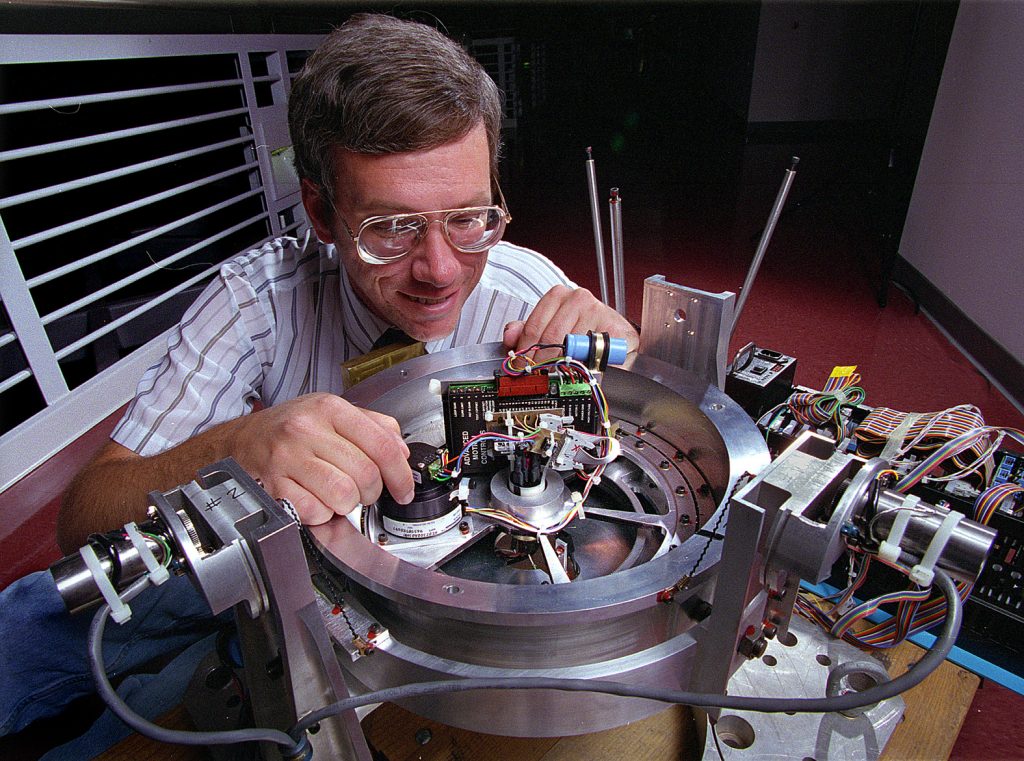ALBUQUERQUE, N.M. — A missile or space ship, spinning like a football or Olympic diver as it reenters Earth’s atmosphere, ordinarily is designed to be perfectly balanced — with tight control over the distribution of mass within it — to avoid flight instabilities. Unguided weapons in particular need accurate preflight balancing if they are to come close to their intended targets.

But, going against this tradition, rocket scientists at Sandia National Laboratories — a U.S. Department of Energy facility — have devised a method that purposefully unbalances the reentry vehicle to steer it closer to a target.
The approach also could reorient a satellite in space.
The unorthodox method is relatively cheap, easy to install, does not change the external shape of the vehicle, and requires neither jets nor fuel.
Called the moving-mass trim-control system, the method achieves its effect simply by controlling the movement of two internal weights that rotate on a metal ring secured within the reentry vehicle.
The positions of the weights will be determined by an onboard computer chip equipped to receive input signals from the omnipresent Global Positioning Satellite system. A guidance algorithm, fed precise data on the location of the vehicle, will alter the locations of the weights to create the trajectory needed to come down on target or to achieve a more effective orbit.
Like a shifting load in an 18-wheeler truck
Shifting weights alter the direction of a vehicle in a manner similar to that unintentionally achieved when unsecured cargo shifts in the van of an 18-wheeler, taking the truck in a new direction. In the case of the Sandia design, the control system must ensure that the motion of the shifted mass does not cause the reentry vehicle to become unstable.
The design improves upon an earlier Sandia idea recently flight-tested in a Navy-sponsored joint Sandia/Lockheed-Martin project. In this earlier version, the moving weights were mounted to an extension of the vehicle, which changed its aerodynamic behavior. The newer design, intended for retrofit within existing vehicles, is smaller, requires less power to operate, and does not require new computations of the host vehicle’s flight capabilities.
The research is funded internally by the Laboratory Directed Research and Development program, which funds speculative, defense-related research.
Sandia is a multiprogram DOE laboratory, operated by a subsidiary of Lockheed Martin Corp. With main facilities in Albuquerque, N.M., and Livermore, Calif., Sandia has major research and development responsibilities in national security, energy, environmental technologies, and economic competitiveness.